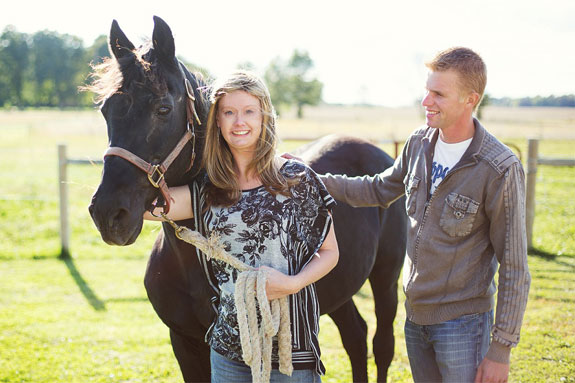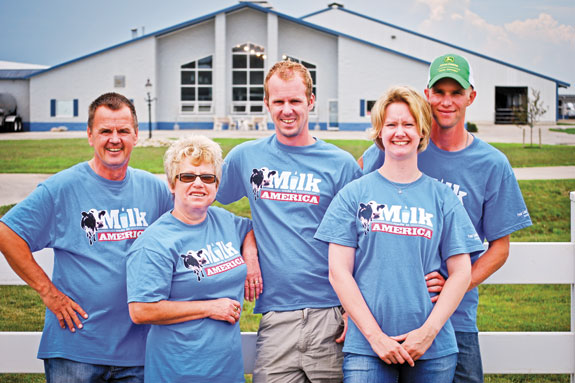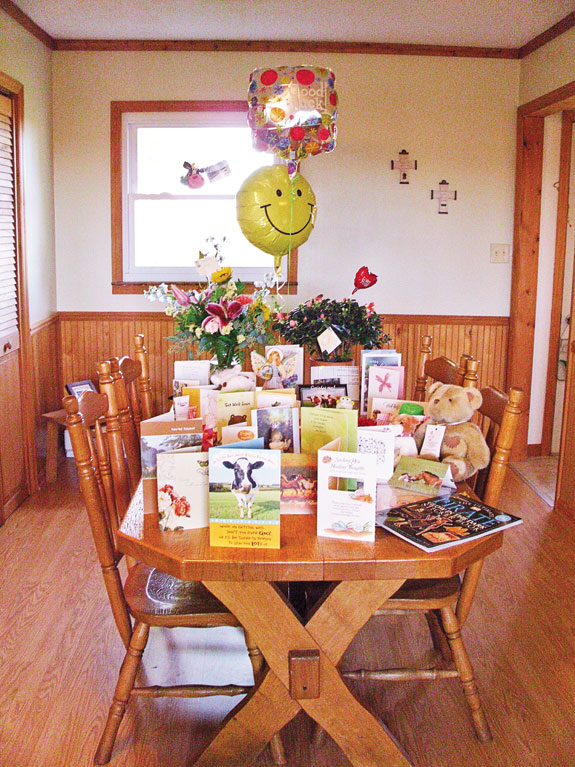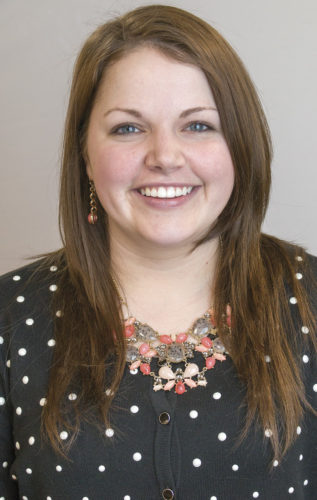This article was #1 of the Top 25 most well-read articles on www.progressivedairy.com in 2012. to jump to the article. It was published in the November 21, 2011 issue. Click here for the full list of the Top 25. When we put Leontien VandeLaar on the cover of our 2011 “Women in dairy” issue, we knew she had a powerful story – but we were blown away by just how many connected with the Indiana dairywoman.
The article received more than 2,800 pageviews online and 12 comments. We were also honored to receive recognition by the Livestock Publications Council at the 2012 Ag Media Summit when this piece won first place in the category “Feature/Human Interest Story.”
We asked Leontien to provide us with an update. Here was her response:
Miracles happen …
• When hundreds and hundreds of people who you do not all know still say prayers every morning and evening and keep having faith and hope when you might have lost it a little bit.
• When hundreds and hundreds of people that you do not all know send cards and gifts and lovely surprises just to show their support and love.

• When you are able to see your husband smiling at you each morning and say, “Hello honey,” and when family and friends come over often to just do “fun things.”
In September, we had an extremely rough month. We started a new “Immuno” therapy three weeks before and since the side effects were not too bad, we went for round two. I did have a little bit (a lot more than I wanted to admit to myself and Bastiaan) of pain at my shoulder. By the next Thursday after the treatment, I could not walk, lay, sit or stand any more, even heavily medicated.
The pain in the shoulder was just too bad.
I got admitted into the hospital that same day. And we started testing. There was nothing miraculous about the test results.
We took pictures of the spine, the shoulder and my head. I always joked about the fact that I had nothing in my head because I am a blonde … well, from that day on, I could not joke about that anymore.
They found tumors (yes, several) in my head as well as in the spine and the shoulder. We started radiation the next day and are since one month on hospice care …
Every morning I wake up and ask myself, “Is this the day?”
And every morning I tell myself, “No, this is a day where miracles happen.”
—Leontien, dairy producer, Indiana
Watch for updates about Leontien at www.fourleafcloverdairy.blogspot.com. Show her your support at www.facebook.com/LoveForLeontien
ARTICLE :
Editor's note: This article appeared in the November 21 issue of Progressive Dairyman magazine. Click here or on the photo at right to see the full issue. We are honored to feature such an incredible and courageous dairywoman, and we've appreciated the many comments we've received. to jump to the comments section below.
In three years, Leontien VandeLaar moved to a new country, started a 2,000-cow dairy, was married three times (to the same man) and began an ongoing battle with skin cancer.
She describes herself as “determined” and even “stubborn,” but that wouldn’t be most people’s first impression of her.
The blonde-haired Holland native has a friendly smile, a bubbly personality and a well-known soft spot for the special men in her life – her husband and a black stallion horse with its own unique story.
Leontien’s pursuit of the American dream began as a girl. Her uncle had moved to Canada when he was 18 and would visit the Netherlands about every five years, bringing with him stories about farms in North America.
Leontien began saving her money by working on a neighbor’s farm and, at 16, she convinced her parents to allow her to visit her uncle for three months.
“And I loved everything,” Leontien says. “I loved the people; I loved the country; I loved the horses, everything. So when I went back home, I told everyone, ‘When I grow up, I’m going to go live in the States. You can’t change my mind.’ I didn’t really know what I was going to become or what I wanted to do, I just knew that as long as it was in the States, it would be OK.”
And so began Leontien’s mission to move to the U.S. She attended college in her home country, obtaining a master’s degree in agricultural economics and a teaching certificate. She also made several trips to visit her uncle and his wife, who are now living in America.
Building her dream dairy
From the time she graduated in 2004 to when the family started their dairy three years later, Leontien had worked at four dairy operations in the Midwest. She noted things she liked about each operation, as well as areas she thought she could improve.

She influenced her parents, Wim and Maria, originally hog farmers in Holland, and her brother, Jan-Willem, into joining her cause. Wim and Jan-Willem also completed work stays at dairy farms in America, giving the family a total of seven different hands-on farm experiences.
They worked with a Holland-based company, Vreba-Hoff Dairy Development, to identify a site in Indiana and to begin construction. Vreba-Hoff has provided assistance to many Dutch immigrants, helping them to obtain visas and land permits and to begin construction.
Leontien says her family tweaked the development company’s freestall barn layout slightly, adding in 84 additional stalls to the side of the holding pen and a double palpation rail.
“We tried to consider first and foremost cow comfort, and I wanted to have a good environment for people to work in,” she says.
The family milked cows for the first time on their American farm on November 20, 2007, about a year after the family moved.
“That was a good day,” the now 32-year-old Leontien says. “Probably one of the best days ever.”
The family chose the name “Four Leaf Clover Dairy” because “everybody needs a little luck,” Leontien says.
In fact, proudly displayed in the farm’s office is a gift from the development company. In Dutch, it says “Veel geluk en ‘n zonige toekomst in het nieuwe land,” which translates to: “Lots of luck and a bright future in your new country.”
Unlucky news
Just five short months after the family began milking on their new farm, Leontien was given some unsettling news. She had been making preparations for her wedding in July to her boyfriend, Bastiaan Oostdijck.
A mole on her leg and a spot on her back had her concerned about being in wedding photos. She wanted to be sure she had “beautiful legs,” she says, so she decided to make an appointment to have them checked out.
The dermatologist was concerned about her blemishes for a different reason and scraped a patch of skin to perform a biopsy.
Leontien says she’ll never forget the day she received the phone call in the office at the dairy, notifying her the doctors discovered a disease called melanoma, the most dangerous form of skin cancer. After she hung up the phone, Leontien walked outside of the dairy office, and the first person she saw was Jan-Willem.
“I just started crying,” she says, tears welling in her eyes. “I was like, ‘What’s this? I just started my whole new life here with my family and everybody I love, and now some crazy doctor is telling me that something’s wrong with me.’”
Within a week of receiving her stage III diagnosis, she went through three surgeries.
Doctors told Leontien she had a 40 percent chance of survival. If she beat the cancer and it came back, she would be dead within a year, they said.
The cancer had already spread to her lymph nodes, making radiation ineffective. But the doctors felt they could keep it from creeping into her organs with an intense form of chemotherapy, known as Interferon.
What kept her going
She started Interferon treatments in August 2008, going five days a week to a hospital in Fort Wayne, Indiana, an hour drive from the farm. She had to be attached to an IV for three hours or more during each visit.
After a month of these treatments, Leontien was put on a cycle of three cancer treatment shots a week for 48 weeks.
“We used to do it on a Monday afternoon,” Leontien describes. “Because I could sleep all Tuesday, come to the dairy to do payroll on Wednesday, Wednesday afternoon would be another shot, sleep all day Thursday, come Friday to do all the other bookkeeping, get another shot Friday, then sleep all day Saturday."
"And Sunday was the only day I felt alive enough to come here for more than a couple hours to talk to the employees and to see how everything was going.”
Despite her family’s urging to stay in bed and rest, Leontien says she had to come to the dairy that often.
“This was what kept me sane,” Leontien says. “I wouldn’t wish this kind of chemotherapy on my worst enemy. There were several times throughout the year when we had to stop because either my body wasn’t strong enough or my mind wasn’t.”
During treatment, another source of comfort for Leontien was her black stallion horse, which caught her attention more than 10 years earlier.
In 1998, Leontien was completing a practical training period at a school in Canada, cleaning stalls and riding and training horses at Touchstone Farms in Alberta.
There, Leontien says she fell in love with Fox Trim Classic, who reminded her of one of her favorite novels, The Black Stallion .
She told the owner that if she was able to fulfill her dream of moving to the U.S., and if the owner ever wanted to sell him, Leontien would gladly take him off her hands.
Four weeks after Leontien was diagnosed, she received another surprising phone call. This one gave her hope. The Canadian owner of her beloved riding companion was now selling the 27-year-old horse.
Leontien says she knew it was a sign from above and quickly agreed to take in the stallion and give him a good home.
“During chemo, if I felt I just couldn’t do it anymore, I just had to look outside the window to see him, and I knew I could,” she says.
Third time’s the charm
Along with “Classic,” Leontien had the support of her now-husband Bastiaan, a man who loves her so much that he left his home country. He left behind his own family and friends to be with Leontien and to help her pursue her American dream.
“I had told him on our second date that I was coming here,” Leontien says. “I don’t think he believed me, but here we are.”
Bastiaan proposed to Leontien the same month the dairy was up and running. The newly engaged couple wanted to invite their friends and family from Holland, so they set a date in July 2008.
However, Bastiaan’s visa was to expire a few months prior, and, to ensure he’d be able to stay in America, they were pronounced man and wife at a local courthouse in January 2008. That was wedding number one.
Their July wedding, what they considered to be the “real” marriage, was put on hold when Leontien heard the life-changing news.
Wedding number two took place about a month into Leontien’s chemotherapy treatments. The couple had requested to be married in a Catholic church, and since Bastiaan had not grown up Catholic, they were required to attend a marriage session with a priest.
After learning about Leontien’s diagnosis, the priest often made visits to her home. On one particular visit, Leontien sat next to Bastiaan on her couch, wearing her oldest sweatshirt and weakened by the treatments.
The priest requested the presence of Leontien’s parents and, without permission from Leontien or her family, took it upon himself to perform a wedding ceremony. Leontien believes the priest thought she wasn’t going to survive much longer.
But Leontien was even more determined after the couch ceremony. She had already planned all of the details and even had a wedding dress. She was going to beat cancer and have the wedding of her dreams.
And she did. The third and final wedding took place in May of 2010. Leontien had finished her chemotherapy and was deemed cancer-free.
She was married in a small church, in the strapless white wedding dress she had saved in a closet for two years, with 200 of her and Bastiaan’s friends and family in attendance.
It’s not over yet
Unfortunately, Leontien learned in August 2011 that the cancer was back. She is once again undergoing chemotherapy and battling for her life.
The process began in mid-October. She’s now receiving treatments of Inter Leukin 2 (IL-2), which she describes as the “big brother” of Interferon.
She stays in the intensive care unit for a week at a time, receiving a treatment every eight hours for five days straight. She then has a week to rest and try to build up her stamina before she repeats the process.
“After three months, we should know if it has worked,” she says.
Most people in this situation would probably feel defeated, but Leontien isn’t most people. This time around, she also has the support of an entire community to offer prayers and words of encouragement.
Leontien began blogging about her battle with cancer as well as her dairy farm in April of 2010 at: fourleafcloverdairy.blogspot.com . She joined the ranks of the Real Farmwives of America , a growing group of women who blog about farm life.

After the group learned about Leontien’s second diagnosis, they created a Facebook page called “Love for Leontien”: www.facebook.com/LoveForLeontien . The page has nearly 300 supporters, with some kind of uplifting quote, video clip or song being posted every day.
And it’s not just online support. Leontien says she’s been overwhelmed by the amount of cards, flowers, balloons and treats being delivered to her home.
Ever positive despite her hardships, she continues to post on her blog and on Facebook, thanking people for their support and keeping them updated on her progress. In a recent post, she ended with a quote that represents her fighting spirit:
“I can be changed by what happens to me. But I refuse to be reduced by it.” —Maya Angelou PD
PHOTO 1: Leontien VandeLaar convinced her family to move with her to America, and all are active on the operation. Photo provided by Leontien VandeLaar. PHOTO 2: Leontien says she’s been overwhelmed with the amount of love and support from the wonderful friends she’s made since moving to America. Photo by Emily Caldwell.

-
Emily Caldwell
- Editor
- Progressive Dairyman
- Email Emily Caldwell
COMMENTS





